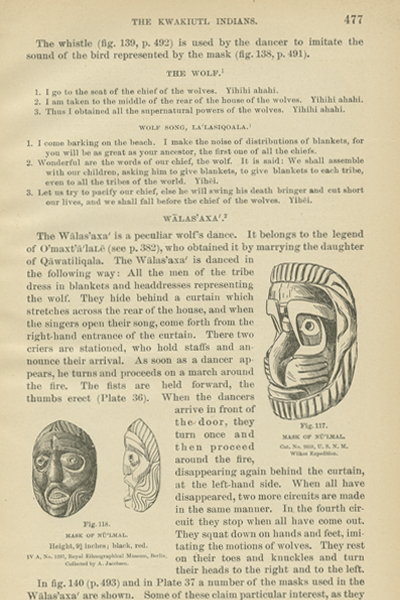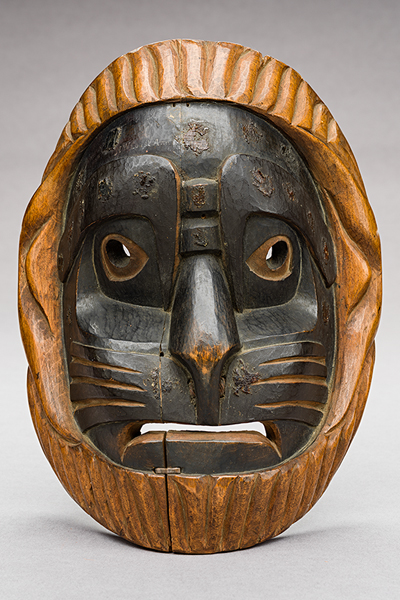CHAPTER III: EARLY FIELDWORK AND COLLECTIONS
Boas’s Approach to Anthropology
“We have not a single [cedar-bark] ring here, and I want very badly to have a series of such with the traditions and songs belonging to them.… It is better for us to get a few less and the story belonging to each. We do not want to grab everything, and then not know what the things mean.”
– Franz Boas to George Hunt, 14 April 1897
Franz Boas used his detailed research with the Kwakwaka’wakw to help undermine scientific racism. The dominant anthropological paradigm of the late 19th century was social evolutionism, which held that all peoples develop along a single path from simple to complex, from “savagery” to “civilization.” Boas promoted a different tradition of thought, which held that each society has its own internal cultural dynamic (the notion of cultural relativism) and develops according to its actual experience and contact with neighbors (the notion of historical particularism).
Boas’s 1897 book was the first scholarly work to place Northwest Coast visual art in the context of song, dance, ceremony, and social structure. Frustrated with poor museum collection records, Boas pledged to document detailed cultural context for the objects that he acquired or observed. His earliest collections and publications demonstrated the value of first-hand fieldwork, illustrated the role of diffusion (geographical movement through historical contact) in the development of cultural forms, and presented the Native point of view through inclusion of local languages. Although Boas knew that masks are a form of hereditary property, in the book he resorted to a typological format that classified multiple examples under a single heading, thereby removing specific pieces from their kinship connections.
Pages 477 and 478 of Boas’s 1897 book.




